Study of 2D slot stabilized flame for unperturbed and perturbed equivalence ratio
ME Thesis
Flame speed is sensitive to both the strain rate and the curvature of the flame surface. Slot-stabilized flames have curvature and strain rate variation along the flame surface. Hence, we investigate the variation of the flame speed with these two parameters for a steady, unperturbed slot-stabilized flame.
Local quenching of reactions on the flame surface is a significant concern in lean combustion devices, directly related to the net heat release rate and the overall performance of the system. A steady flammability limit-based extinction criterion is more restrictive and demands an unnecessarily high equivalence ratio (Sankaran & Im, 2002). (Sankaran & Im, 2002) have suggested the concept of dynamic flammability limit, to include the effect of flow time scale(strain rate) and equivalence ratio perturbation on flammability limit.
(Bansal & Im, 2007) have extended the concept of dynamic flammability limit. They have studied counterflow premixed flame configuration subjected to various strain rates and have successfully incorporated various time scales in combustion to make extinction criteria more generalized. They also have proposed a Dynamic Flammability Limit Extension (DFLE) as a function of non-dimensional frequency ($\eta$). (Bansal & Im, 2007)’s work is mainly focused on counterflow configuration. Here, we study the applicability of this extinction criterion to a 2D slot-stabilized flame.
Case setup
The fluid domain configuration is illustrated in the following figure, along with the initial conditions for various flow variables.

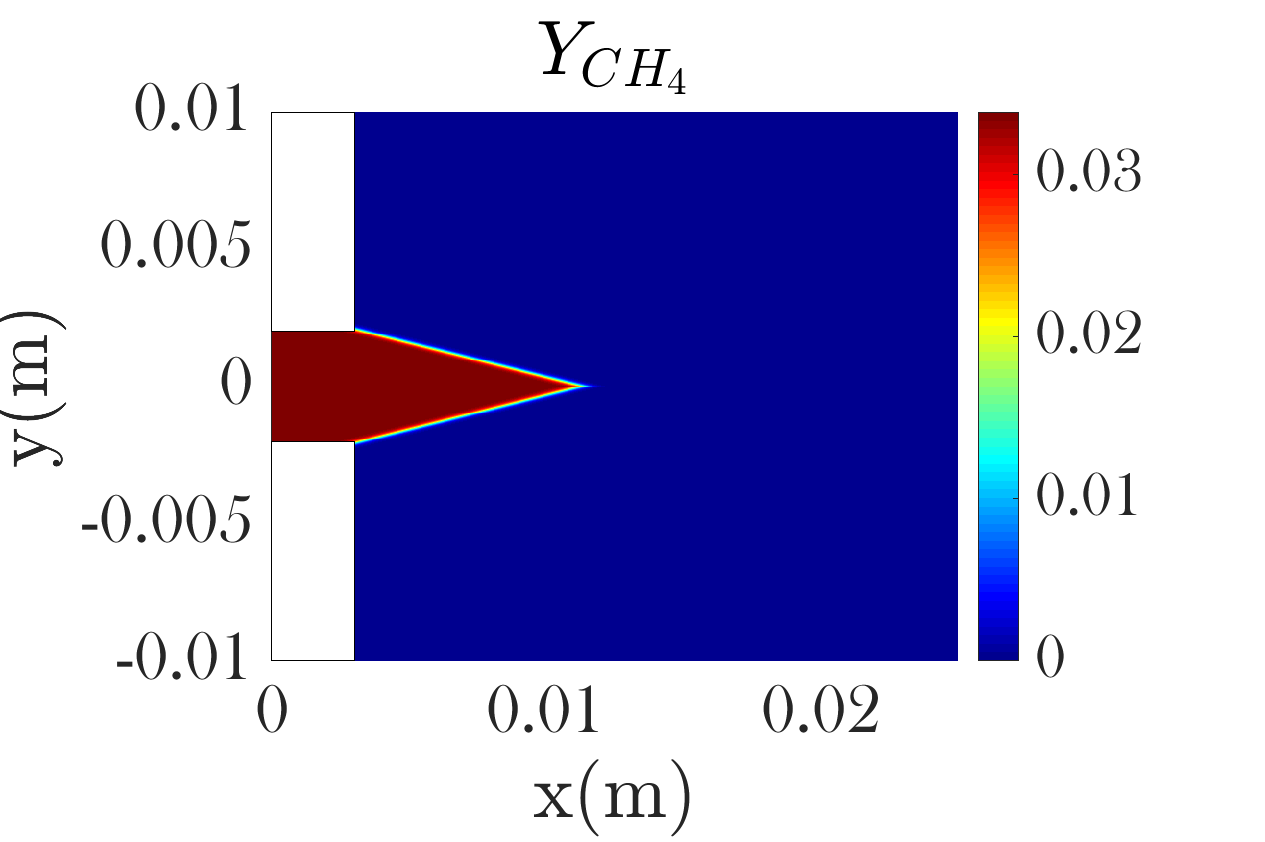


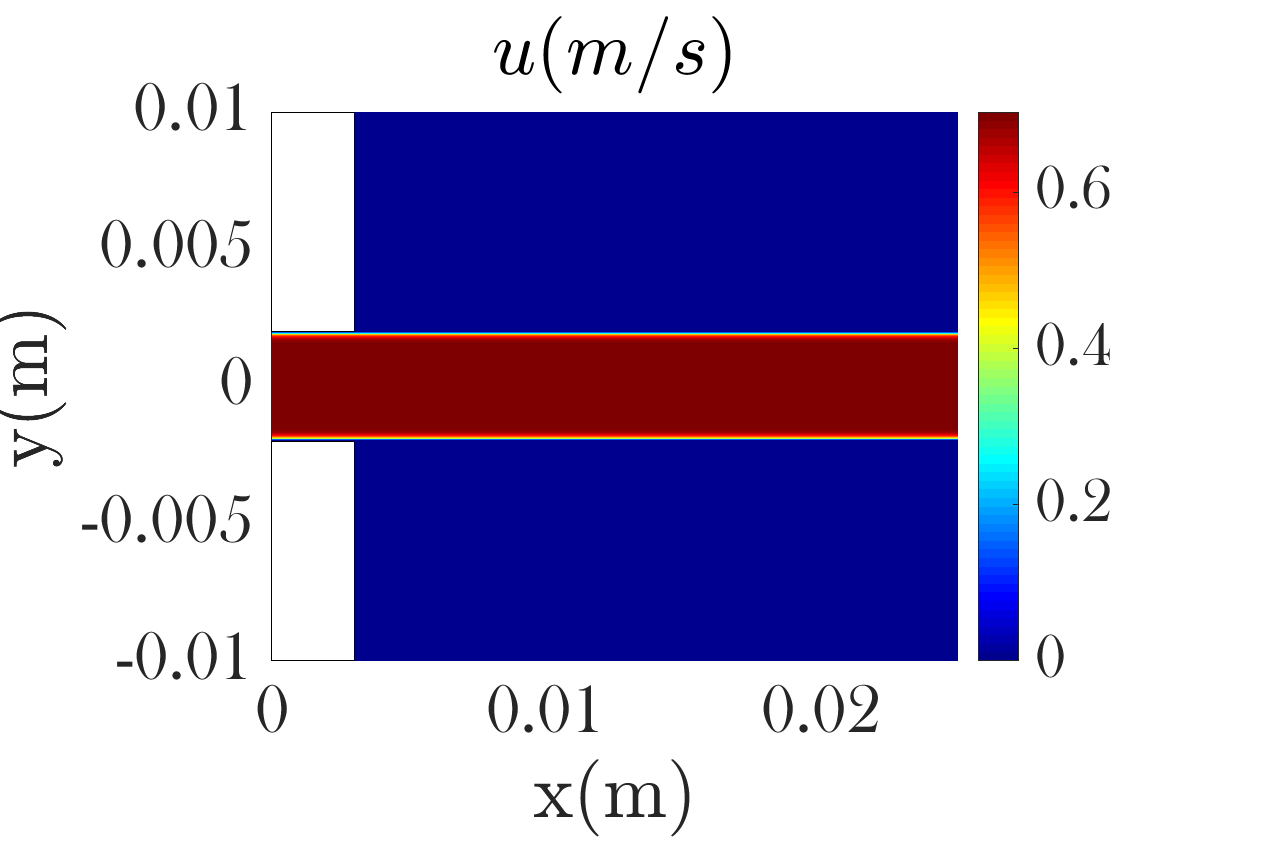
The no-slip boundary condition is applied at the wall, and the non-reflecting boundary condition is applied at the outlet. The computational domain is decomposed onto a multiblock structured grid with 2.4 million grid points and 965 blocks.
Steady state
The steady-state solution is obtained for an equivalence ratio of $\phi=0.6$. Some of the steady-state flow variables are illustrated in the following figures.
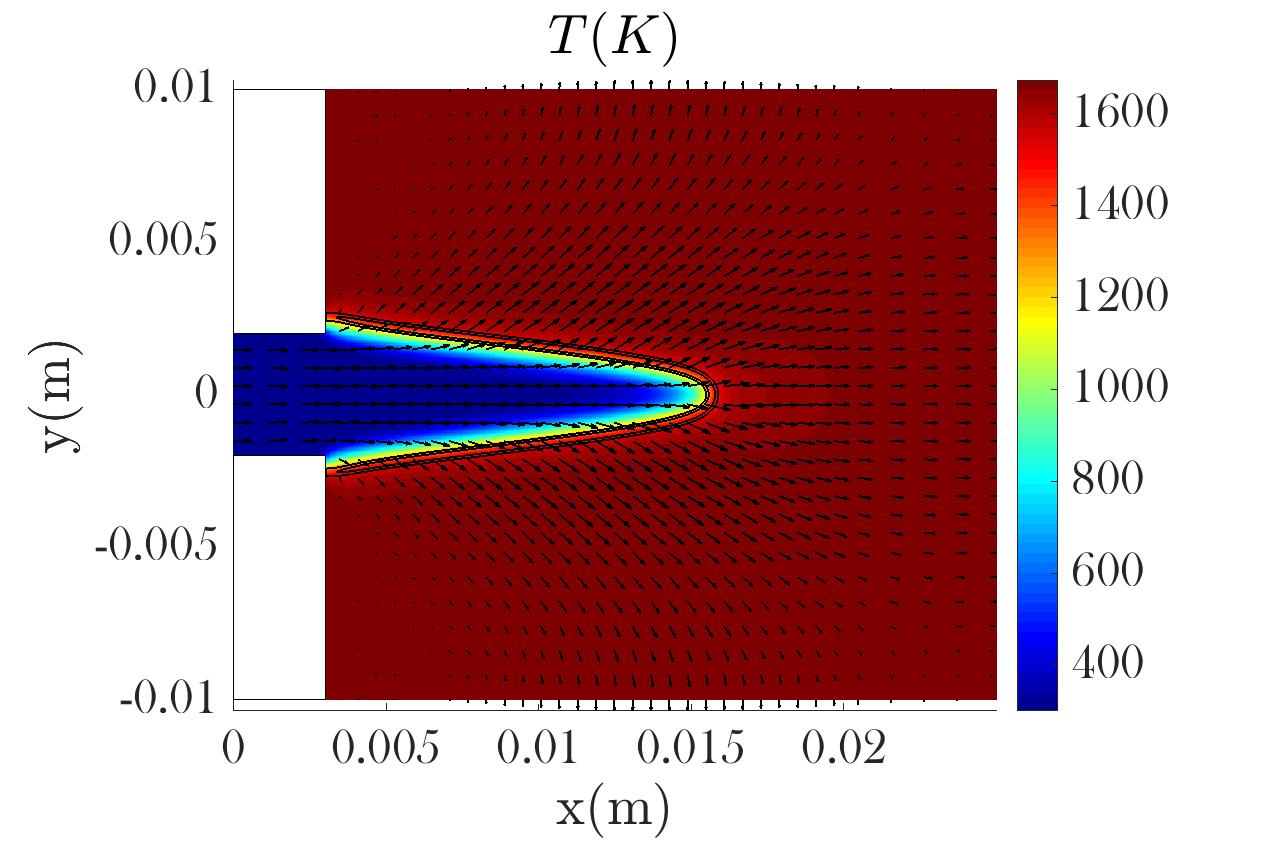
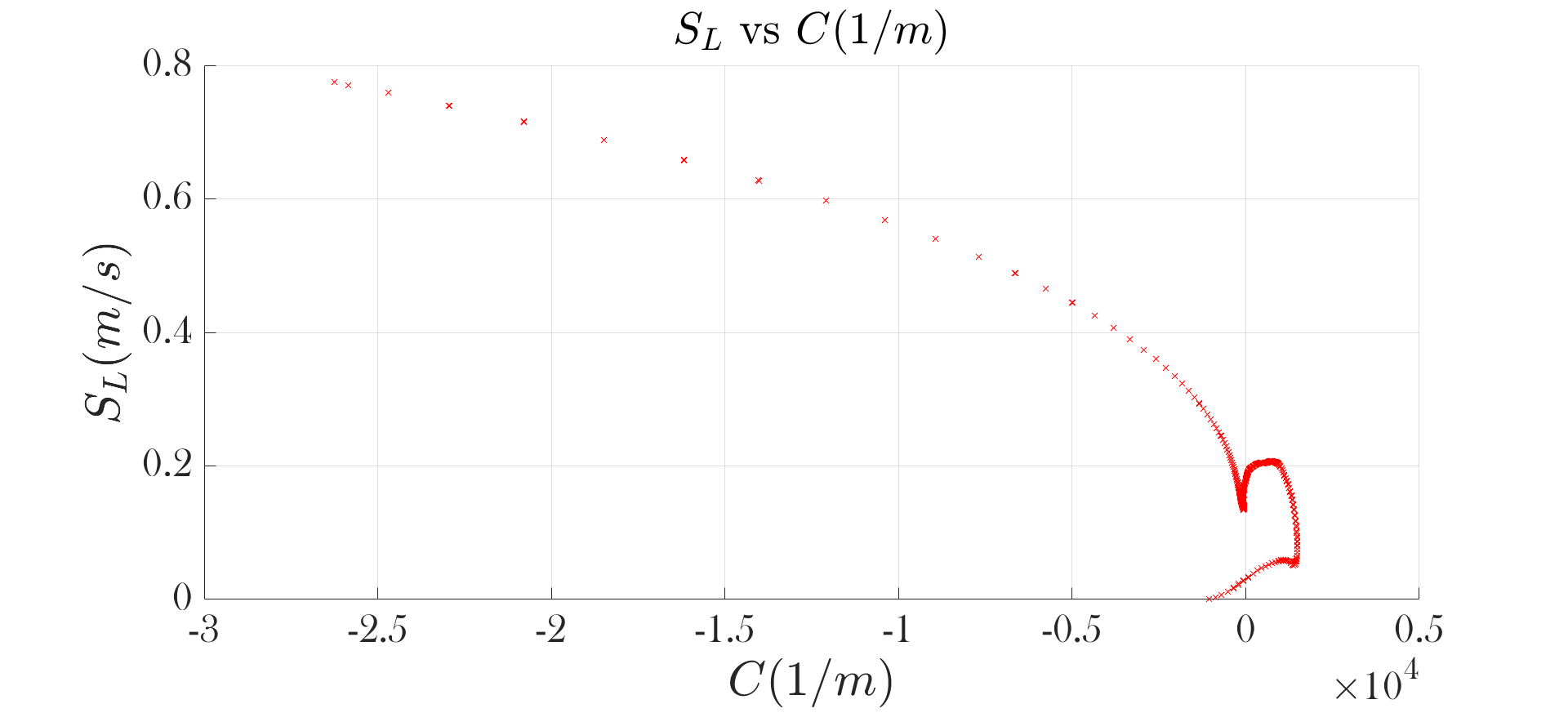

Analyzed the flame speed $S_L$, flame curvature $C$, and strain rate $\kappa$ at 350 K contour for steady state, i.e., without equivalence ratio perturbation.
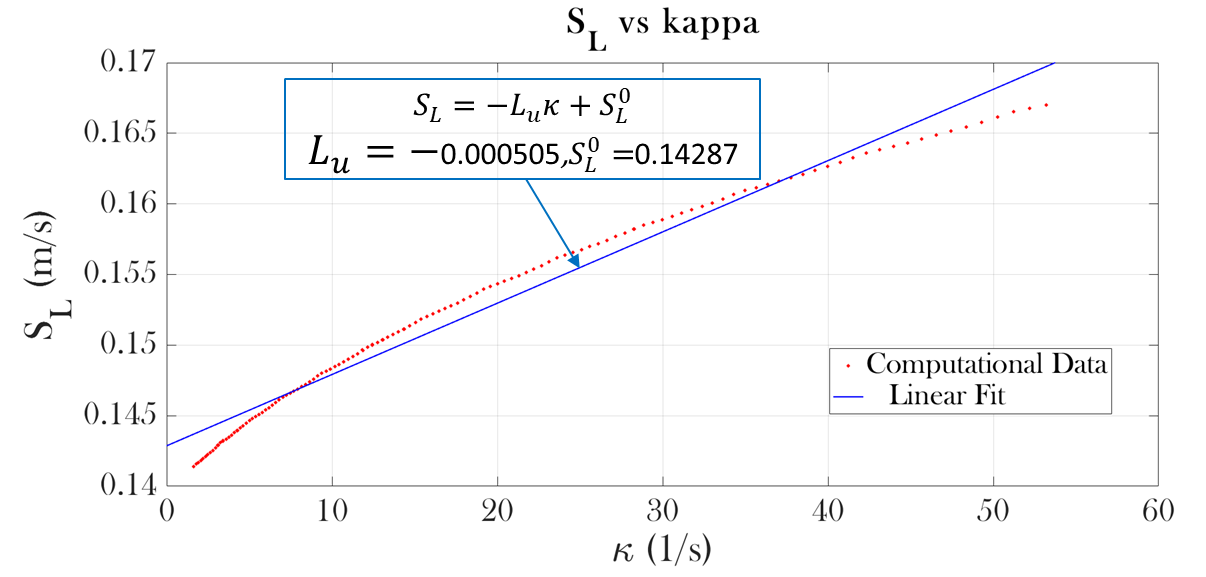
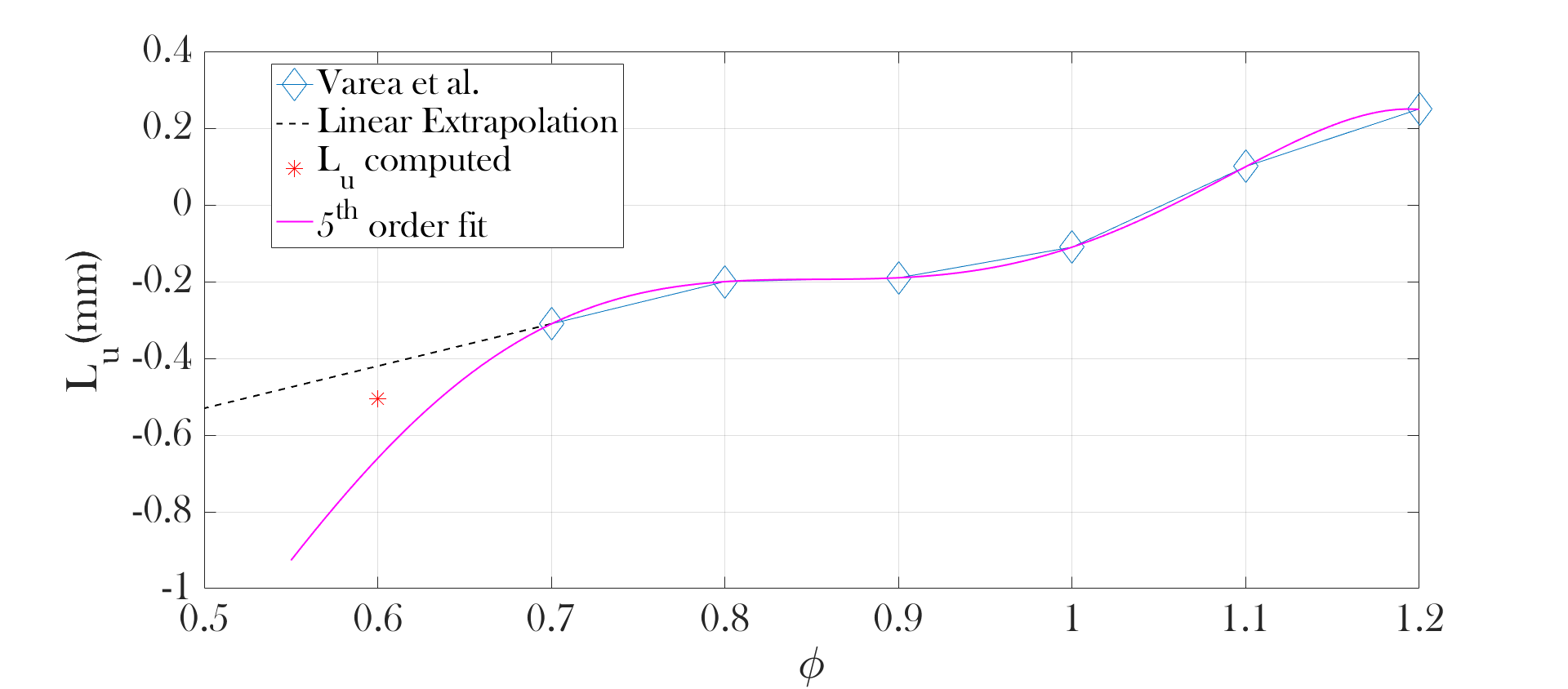
Furthermore, we found that Markstein’s length is in close agreement with the experimental study by (Varea et al., 2012), as shown in the above figure.
Perturbed Cases
We study the behaviour of the flame under the equivalence ratio perturbation and with three normalized perturbation amplitudes ϵ = 0.05, 0.2, 0.4.
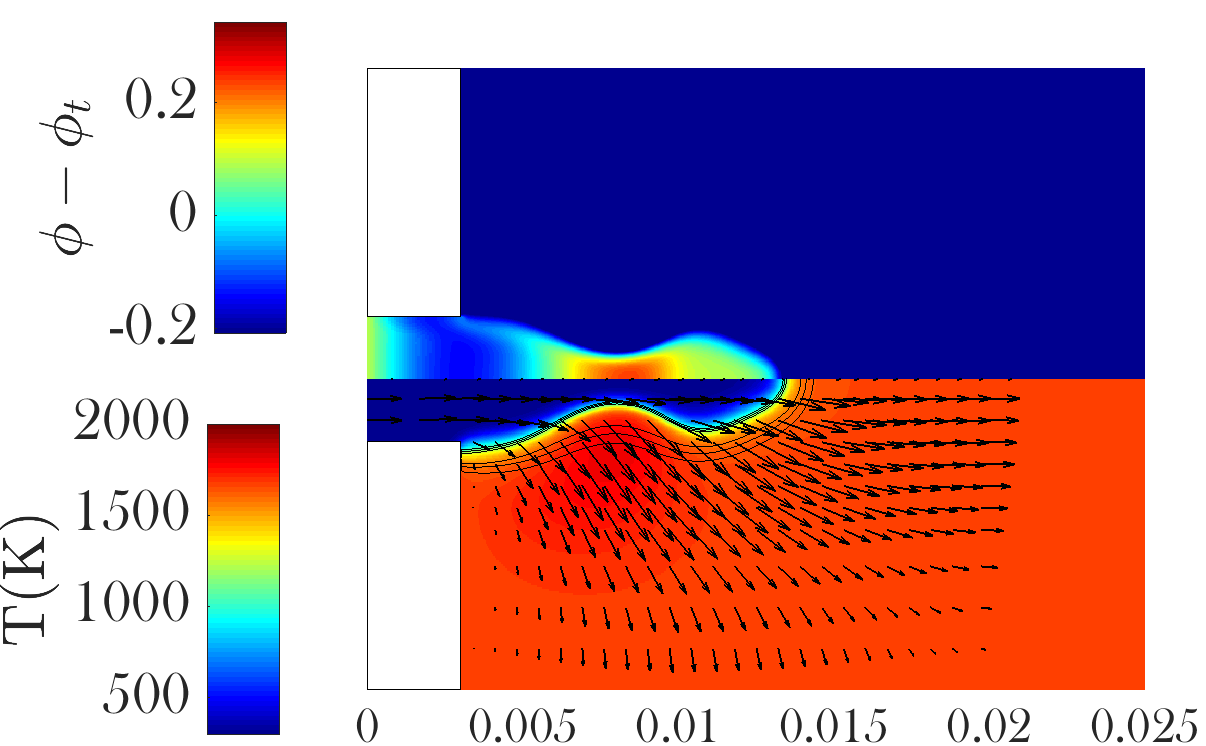

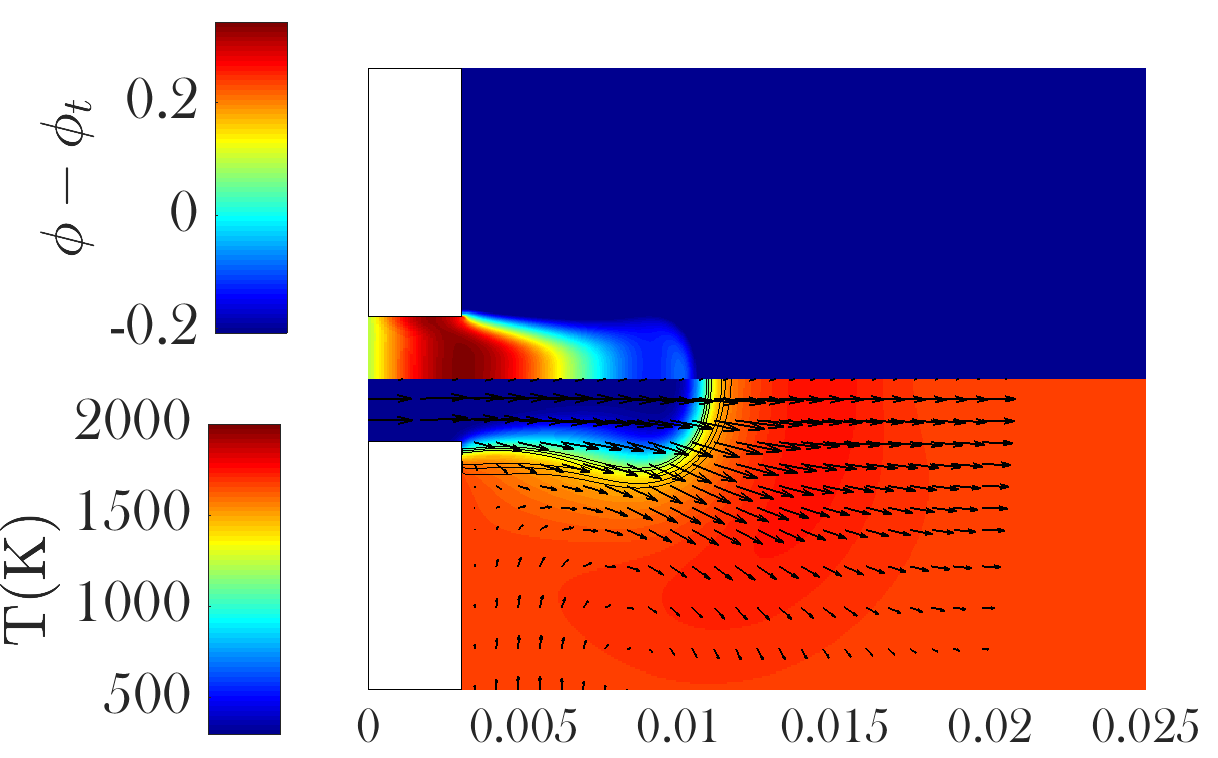

In the analysis for the perturbed case, each case is plotted with the normalized minimum equivalence ratio extension below the steady flammability limit and the normalized frequency to locate the case in either the flammable or non-flammable region. The case with ϵ = 0.05 lies in the flammable region, where ϵ = 0.2 and 0.4 lie in the non-flammable region. But no extinction is found in any of the cases. To understand this flame behavior, the combined effect of strain rate and curvature on the flammability limit needs to be considered, which can be explored as future work.
© 2025 Jayesh M. Dhadphale. All rights reserved.
References
2012
2007
- Time scales in unsteady premixed flame extinction with composition fluctuationsCombustion and Flame, 2007
